The Ari La Sal Peak is the Utah brand's gravity-focused enduro bike, with 170mm of suspension travel front and rear, and a 63.5-degree head angle.
The bike is even compatible with a dual-crown fork, emphasising its thirst for sending it large on demanding descents.
With a full carbon fibre construction and mix of premium components from RockShox, Shimano and Stan's, the La Sal Peak Elite Shimano offers serious value for money with its $4,799 price tag.
On the trails, impressive pedalling efficiency is married to poppy and playful handling characteristics that don't punish poor line choice, even on the roughest terrain.
Despite lacking the armchair levels of comfort that some enduro bikes provide, the La Sal Peak is unwavering on all but extreme downhill trails.
Since I received the bike for testing, Ari has changed its name from Fezzari, with the test bike featuring the old brand name.
Ari La Sal Peak Elite Shimano frame and suspension
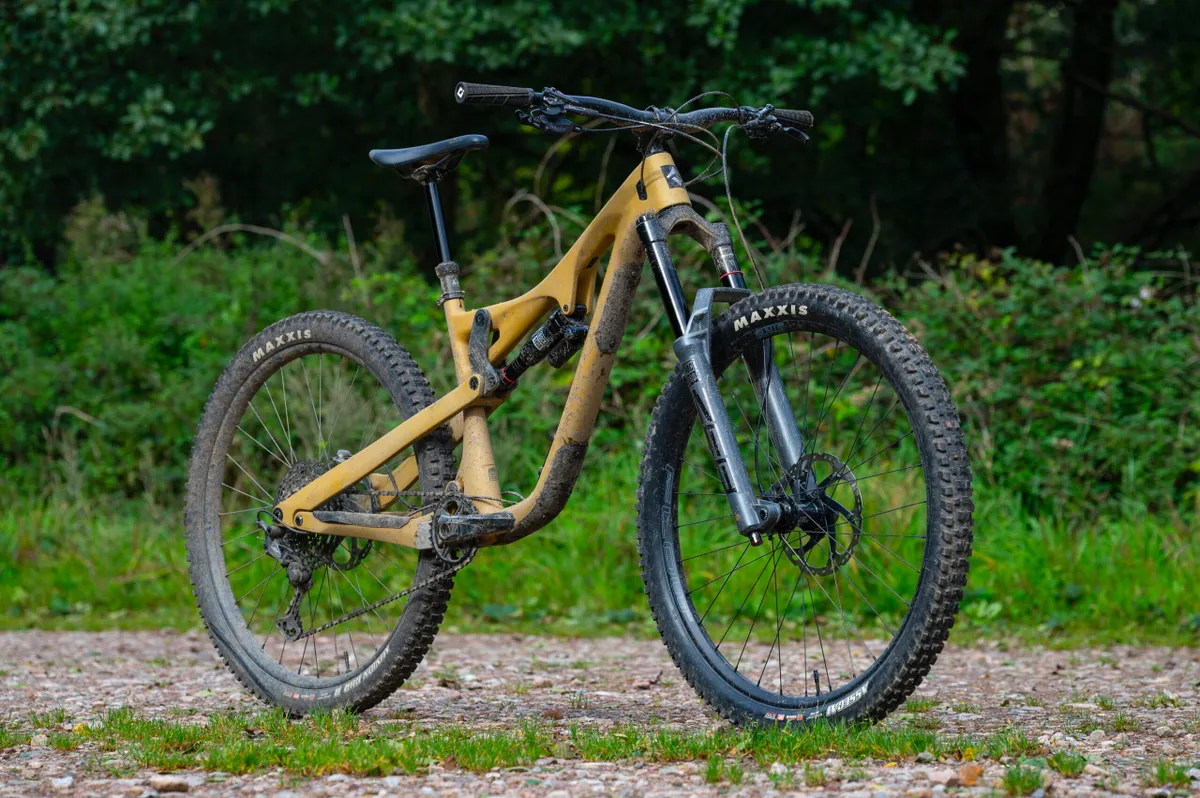
The La Sal Peak’s frame features a full carbon fibre construction, which Ari backs with a lifetime warranty.
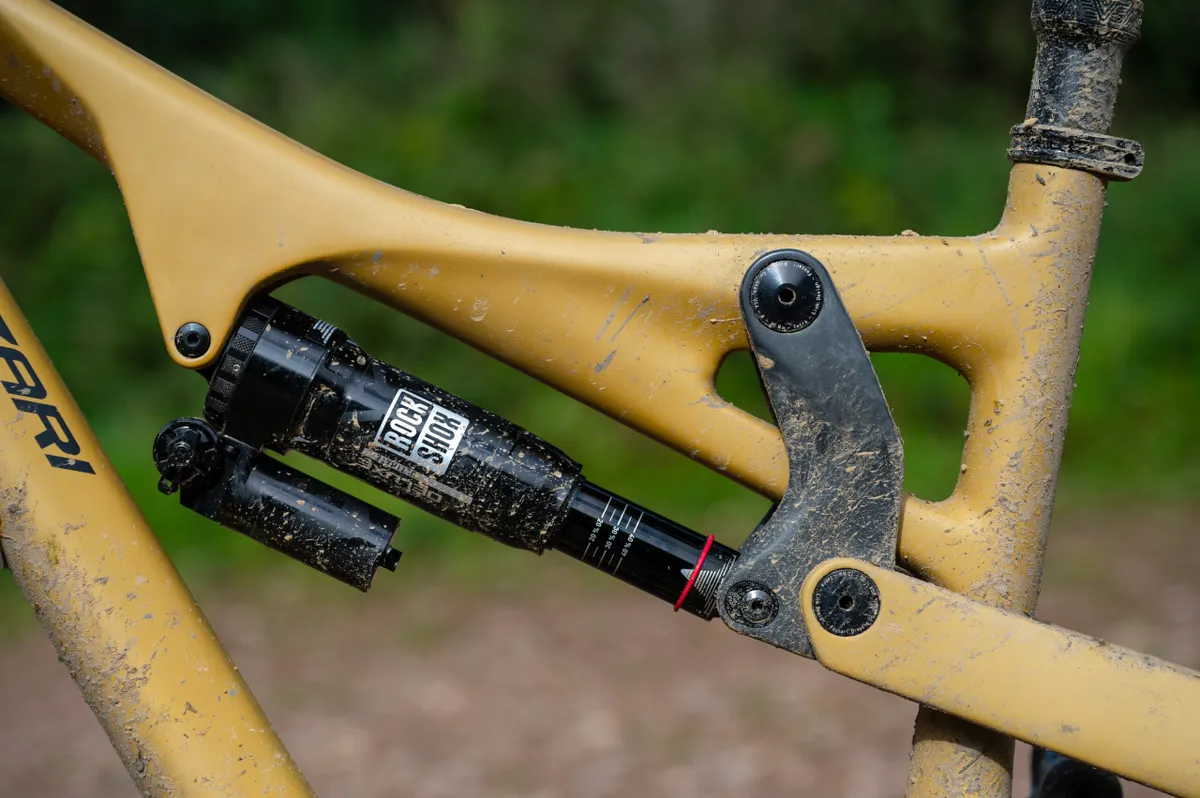
Although the bike has a svelte silhouette, it packs 170mm of rear-wheel travel controlled by the brand’s TetraLink suspension system. This is a Horst-link design, with the rear pivot featuring on the chainstay in front of the rear axle.
Sat inside the frame is a RockShox Super Deluxe Ultimate rear shock, which is custom-tuned to the bike and features a two-position pedal switch.
Ari says this makes the La Sal Peak “climb like a bike with less suspension, and descend as if it had more”. The bike has "anti-squat values that exceed 100 per cent in the pedalling platform”.
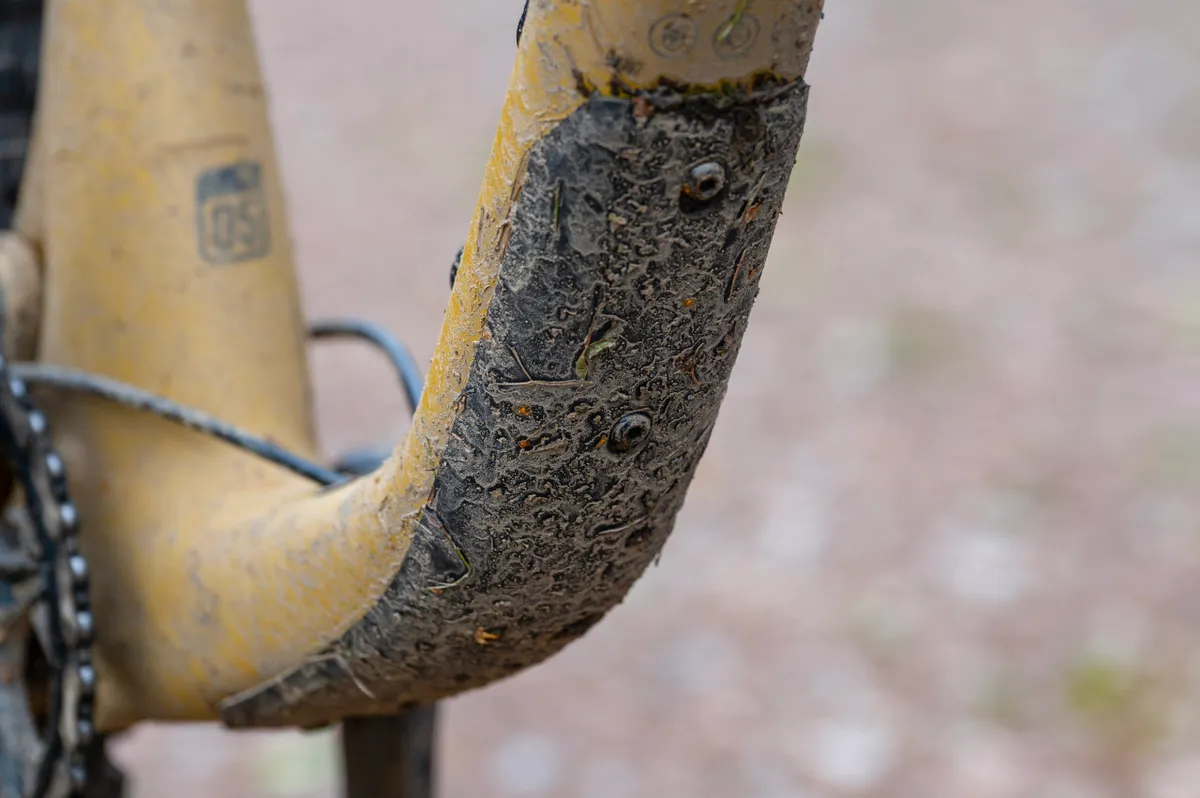
The frame also features down tube protection and a shuttle pad to fend off tailgate rub should you be flinging the front wheel over the back of your pickup truck.
Inside the front triangle are bolts for mounting a cage, although the La Sal Peak misses out on the current trend for internal frame storage.
Ari La Sal Peak Elite Shimano geometry
| S | M | L | XL | |
|---|---|---|---|---|
| Top tube (mm) | 568.1 | 584.9 | 613.1 | 637.2 |
| Seat tube (mm) | 400 | 420 | 440 | 460 |
| Chainstay (mm) | 437 | 437 | 437 | 437 |
| Head angle (degrees) | 63.5 | 63.5 | 63.5 | 63.5 |
| Actual seat angle (degrees) | 72.9 | 73.6 | 74.1 | 74.6 |
| Effective seat angle (degrees) | 77.5 | 77.5 | 77.5 | 77.5 |
| Head tube (mm) | 90 | 100 | 110 | 120 |
| BB height (mm) | 347.6 | 347.6 | 347.6 | 347.6 |
| BB drop (mm) | 26.4 | 26.4 | 26.4 | 26.4 |
| Wheelbase (mm) | 1206.1 | 1230.4 | 1264.8 | 1294.2 |
| Fork offset (mm) | 44 | 44 | 44 | 44 |
| Standover height (mm) | 739.6 | 741.6 | 742.6 | 744.6 |
| Stack (mm) | 612.6 | 621.6 | 630.6 | 639.5 |
| Reach (mm) | 4335 | 455 | 485 | 510 |
As the most enduro-oriented bike in Ari’s line-up, it’s unsurprising that the La Sal Peak has slack geometry.
The size-medium bike I tested has a head angle of 63.5 degrees, an effective seat tube measurement of 77.5 degrees and a reach figure of 455mm.
Chainstay lengths measure 437mm across all sizes and it has a 1,230.4mm wheelbase.
Ari offers a 23-point custom setup, which takes into account height, weight, gender, age, inseam measurement, shoulder width, arm length, torso length and riding position – among other things.
This setup not only indicates the best frame size, but Ari will also spec size-specific components such as dropper posts and crank-arm lengths.
Ari La Sal Peak Elite Shimano spec and details
RockShox ZEB Ultimate fork
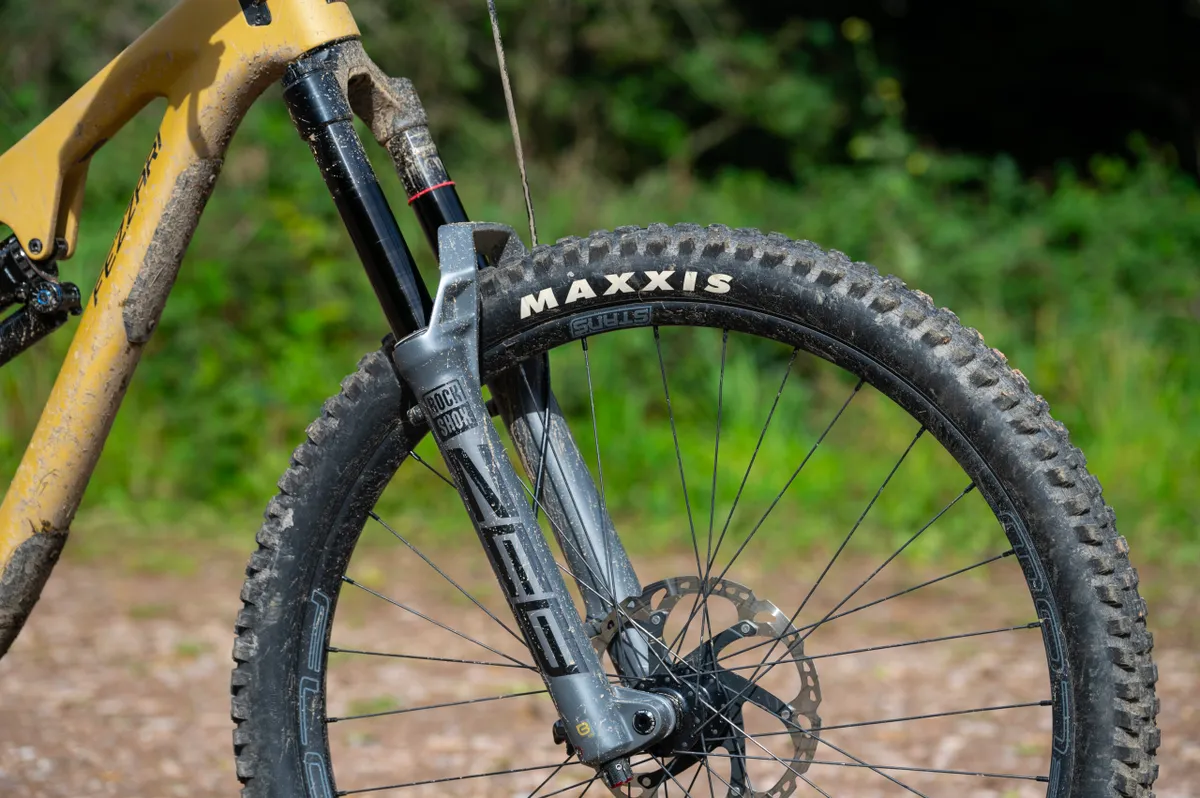
Bolted onto the front of the Ari is a 170mm-travel RockShox ZEB Ultimate fork, featuring a 38mm stanchion width, which should bolster steering accuracy through the rough stuff.
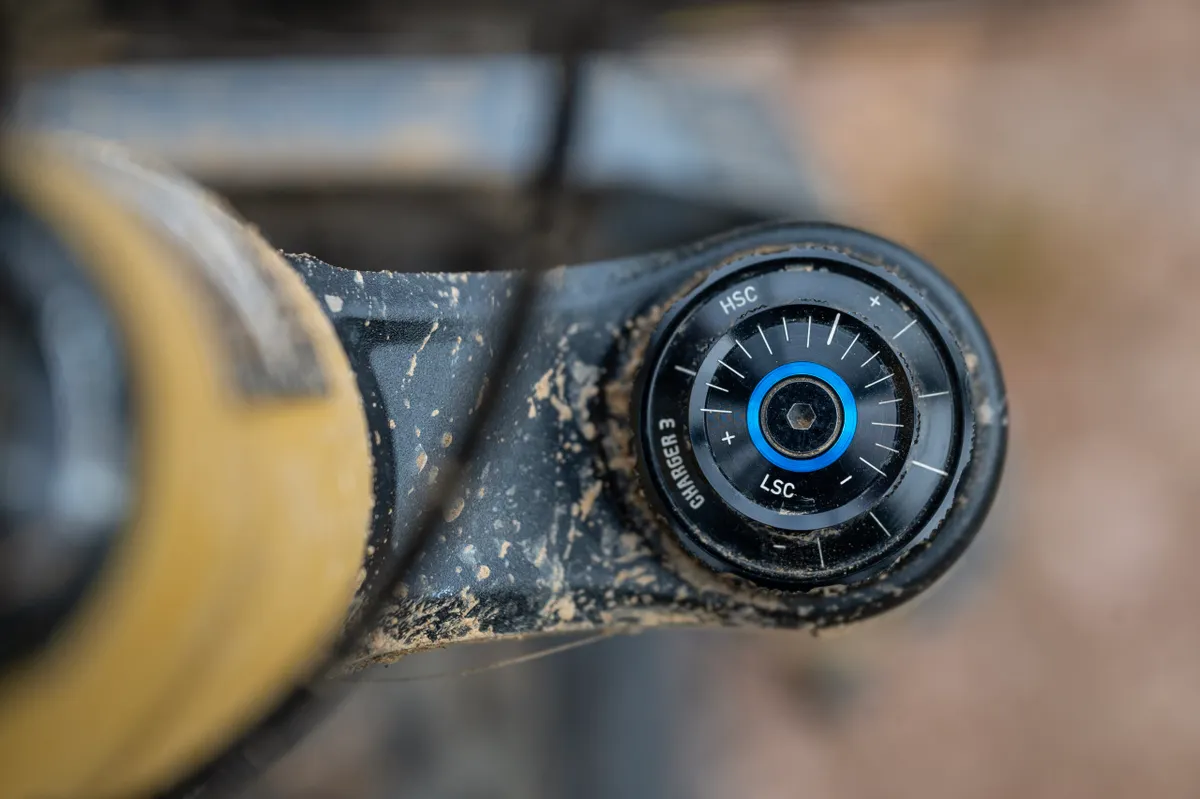
This variant of RockShox’s enduro fork features a Charger 3 RC2 damper, which uses the brand's ButterCups technology.
ButterCups are rubber pucks that sit on the damper and air spring shafts, and are said to absorb high-frequency, low-amplitude vibrations, keeping them away from the rider.
Shimano XT drivetrain and brakes
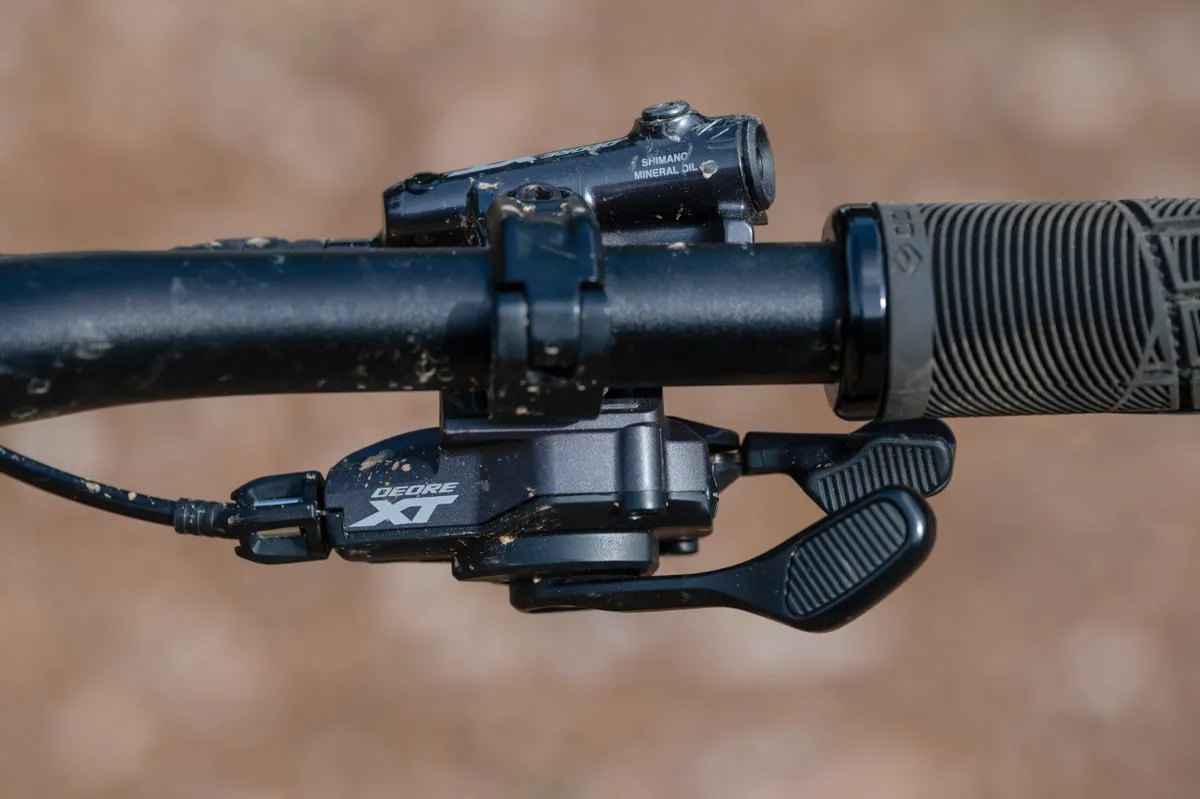
The La Sal Peak is treated to a full Shimano XT 12-speed drivetrain; there are no cheap alternatives hiding out of sight here, with even the cassette and chain wearing the XT moniker.
I’m well acquainted with Shimano XT and rate the groupset highly considering its features and price.
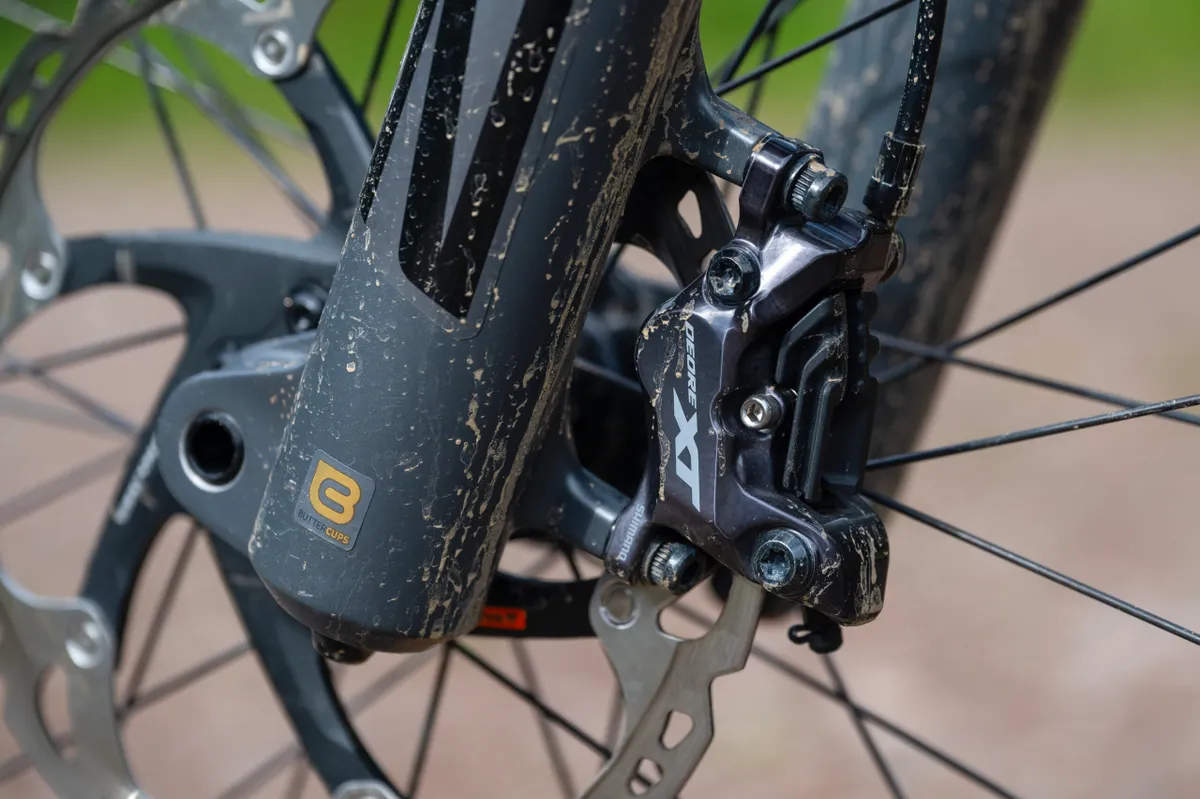
The Shimano XT M8120 four-piston brakes are a standout feature and a firm favourite of mine for their punchy performance and taut lever feel.
These bite down into 203mm rotors front and rear.
Stan's Flow MK4 wheelset and Maxxis tyres
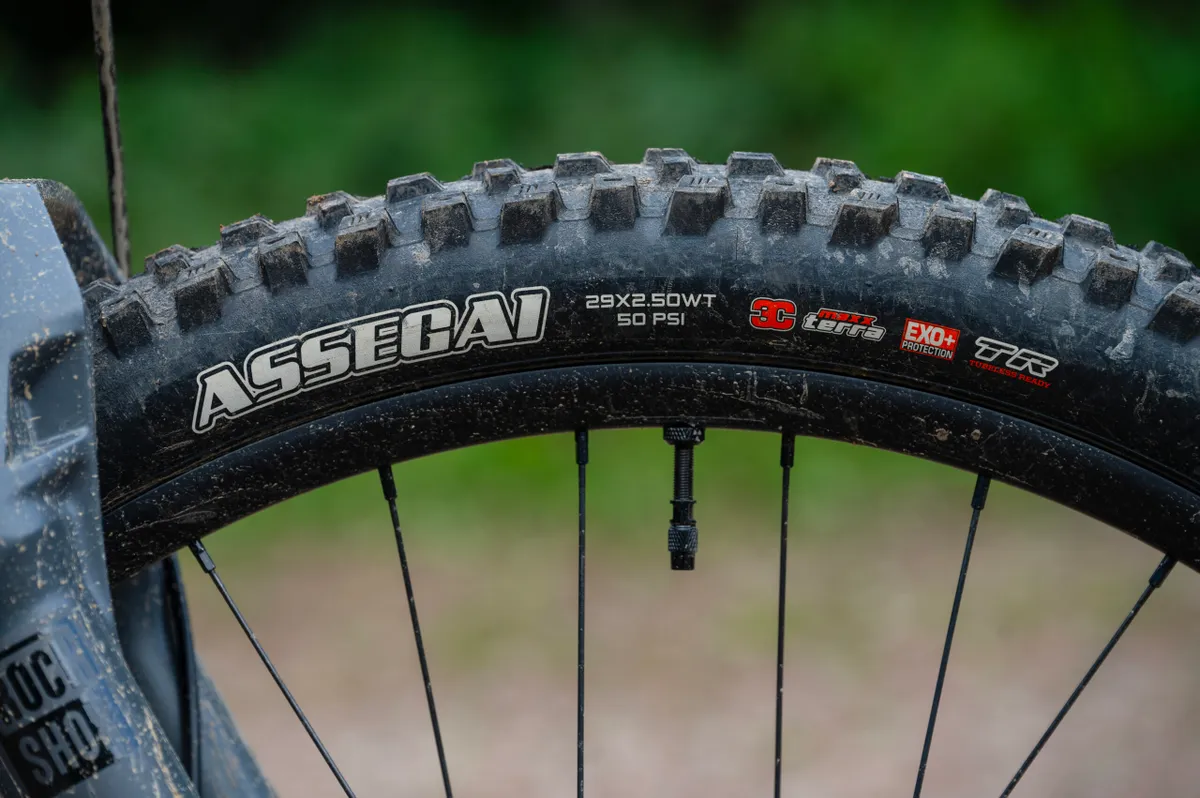
The bike rolls on Stan's Flow MK4 rims, laced up to E-Sync hubs using Sapim Race spokes.
A Maxxis Assegai 2.5in EXO+ 3C TR tyre is used on the front wheel, while the rear is booted in a Maxxis Minion DHR II EXO+ 3C TR.
This is a popular choice that I've used before and found to be adaptable to variable conditions.
Ari La Sal Peak Elite Shimano ride impressions

I have ridden the La Sal Peak for a couple of months and taken it on a variety of terrain and trails during this time. The bike's first outing was in Morzine, France.
Setup
As a direct-to-customer brand, Ari's La Sal Peak comes partly assembled out of the box, with only the wheels and bar needing to be attached.
I realised quickly that the 23-point custom setup was a little off when setting the seat height, with the 150mm dropper post collar sitting a good 50mm above the seat clamp.
Before hitting the trails, I set the suspension up to Ari’s recommended sag measurements of 30 per cent in the fork and rear shock.
Fork
- 55psi
- One volume spacer
- 10 clicks of rebound
- 2 clicks of low-speed compression
- 0 clicks of high-speed compression (fully open)
Shock
- 160psi
- No volume spacers
- 5 clicks of rebound
- 4 clicks of low-speed compression
All rebound and compression settings were measured from fully closed.
I usually run my tyre pressures around 21psi when riding around my local loamy trails and increase them when heading to harder-packed, faster-running trails.
Setting the Stan's Flow MK4 rims up tubeless with the Maxxis tyres proved a little difficult initially, with the rim tape needing to be retaped due to a hole created by improper adhesion of the original application.
Ari La Sal Peak Elite Shimano climbing performance

From the first ride, the La Sal Peak felt incredibly stable under power, with very little bob from pedalling forces.
This solid feel is very efficient when climbing and reduces fatigue when covering longer distances, compared to other enduro bikes I've ridden. It feels as though you're wasting less energy.
On flatter trails, with less of a gradient, it enables you to get up to speed faster and has a trail bike playfulness that enduro bikes can sometimes suck out of the trail.
The suspension remains active enough to provide grip on technical climbs, and up-front the RockShox ZEB Ultimate flutters in and out of its travel to smooth lumpy sections of trail.
Its relatively steep, 77.5-degree seat angle helps keep your hips over the bottom bracket and enables you to find good balance when tackling steep inclines, while making for a comfortable riding position on fireroad climbs.
Maxxis' Minion DHR II EXO+ 3C TR provides excellent traction at the rear, giving plenty of purchase for out-of-the-saddle efforts on slick climbs.
Ari La Sal Peak Elite Shimano descending performance

A sacrifice is made for the La Sal Peak's impressive climbing performance on the roughest descents, with the bike lacking the conquer-anything feel of the best enduro bikes, which provide sofa-like suspension softness in the rear end.
That’s not to say the La Sal Peak isn’t capable, but there’s certainly less isolation from the trail below, which might not be to everyone's taste.
Good maneuverability on slow-rolling technical trails makes the bike a joy to ride in the backcountry, but that doesn't translate to high-speed sections of trail, with the handling less confidence-inspiring than more aggressive enduro bikes.
The slack head angle makes the bike feel direct and predictable on most terrain, although I found the 455mm reach on the medium-sized bike a little short when tackling the steepest trails, with my weight further forward than on other bikes.
With the reach jumping to 485mm on the large-sized frame, I'd recommend sizing up if you sit in between sizes and plan on hitting bike parks most weekends.
The RockShox suspension works extremely well, with the ZEB Ultimate providing plenty of support and adjustability up-front and the Super Delux Ultimate feeling well-damped in the frame.
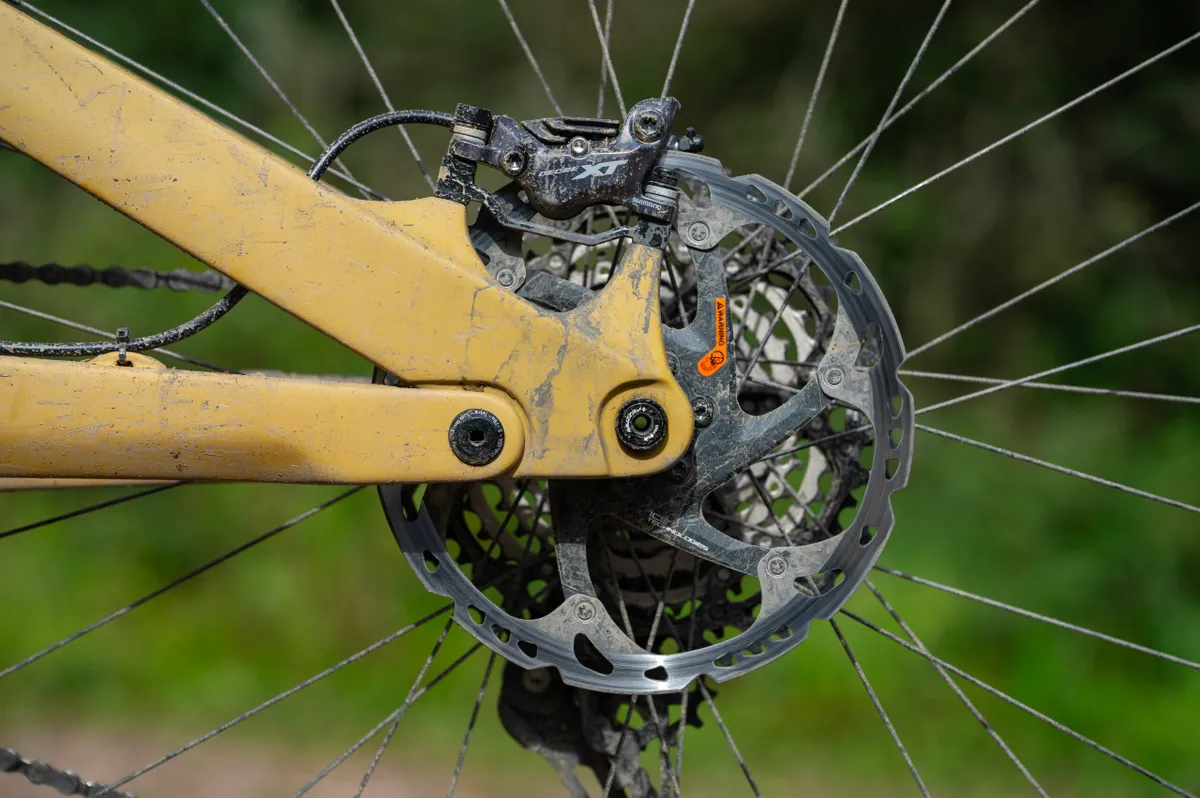
Shimano’s XT M8120 four-piston brakes work wonderfully, providing all the bite and modulation you'd expect from this benchmark brake.
However, I have had problems while shifting gear, which I think can be put down to the design of the La Sal Peak's cable routing through the chainstay.
The design sees the cable exit out of the bottom of the chainstay, causing a tight bend to the cable before it enters the port on the rear of the XT derailleur.
This has caused excessive wear to the cable housing, which shows a significant kink, and has made my shifts less than precise.
I have tried pulling more cable through, but this leaves the cable more vulnerable to snagging on trail debris.
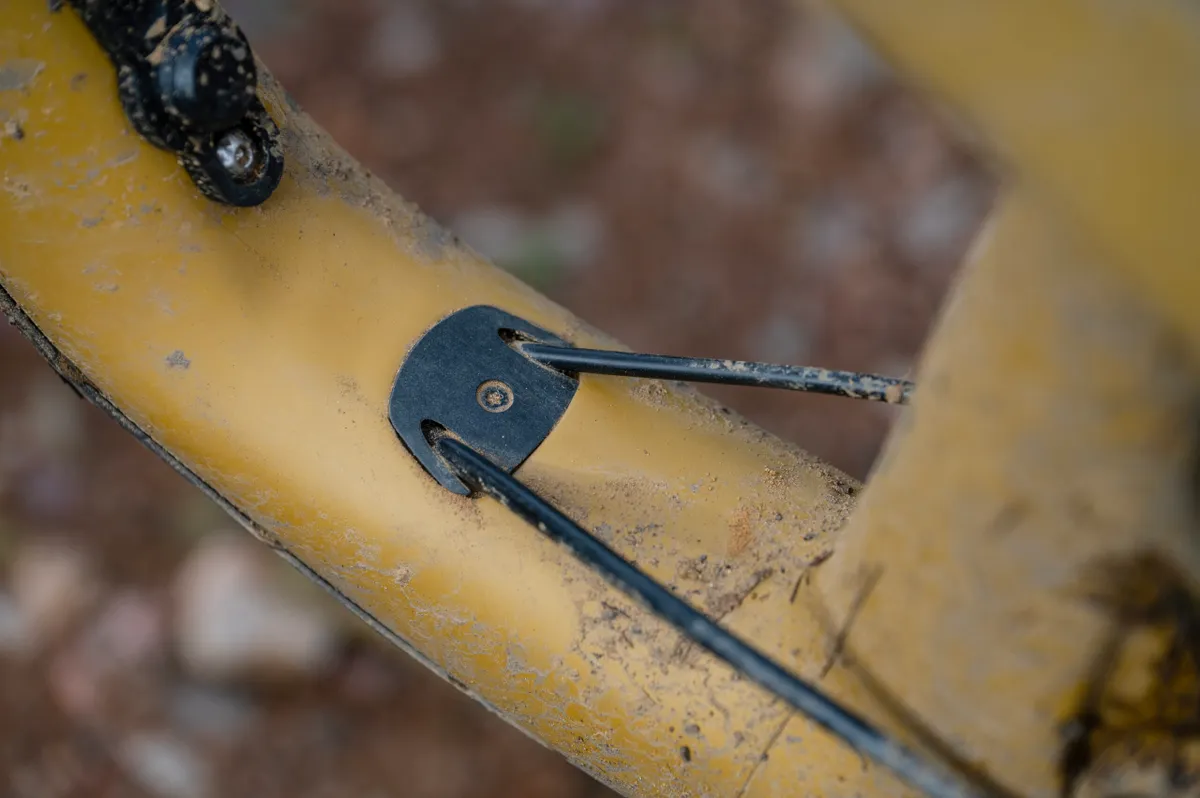
The cable routing also runs close to the main pivot bearing near the chainring and has already worn through the paint, exposing the carbon below.
Ari said it was aware of this issue, and recommended I install a small piece of protective 3M tape to the frame at the rub point to prevent the issue progressing further. I followed those instructions and it fixed the problem.
Other niggles are the chainstay protector, which has begun to peel off where my foot rubs it, and the matt paint that collects the tacky rubber from my shoe soles on the seatstays.
This is common for those who ride left-foot forwards, because the trailing right foot comes into regular contact with the protector when you’re descending.
Despite this, the overall construction of the frame has impressed me posing no real issues with the bearings and bottom bracket still running smooth after an extended testing period.
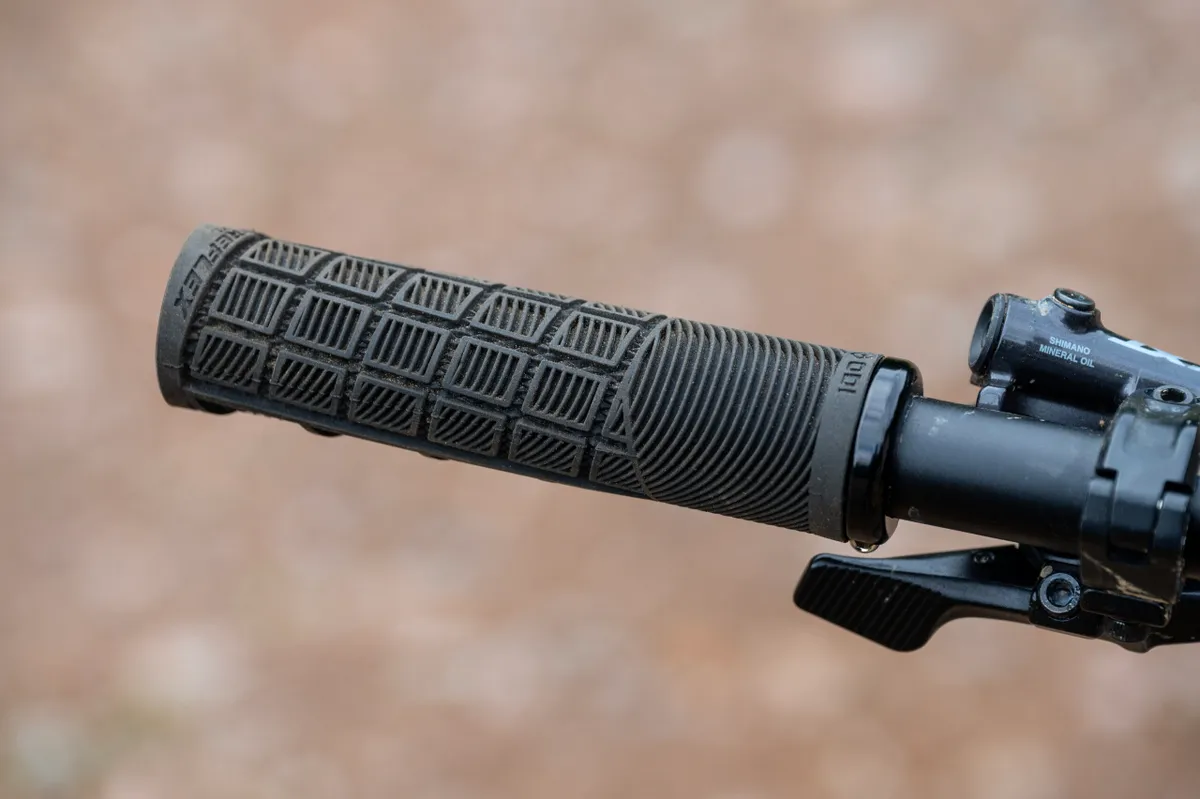
I also had to change grips during my early tests, from the Ergon GA2 to the ODI Reflex, because I was experiencing too much arm pump from the originals, but this was soon relieved with the thicker grips.
There is plenty of traction on offer, with Maxxis’ Assegai and DHR II tyres proving to be all-rounders by finding buckets of grip on hardpack, rocks and loam.
The tyres meet their match in the absolute muddiest conditions, but they tick all the boxes for the majority of riding.
Ari La Sal Peak Elite Shimano bottom line

The La Sal Peak Elite Shimano represents good value for money for the sum of its parts alone, but the 170mm carbon fibre frame has some limitations for those looking for a thoroughbred enduro bike.
Despite this, its impressive pedalling efficiency and capable suspension provide good support for those looking to spend long days in the saddle.
The La Sal Peak Elite Shimano seems to sit in the middle of the trail and enduro categories, offering great versatility for riders less interested in a winch-and-plummet style of riding.
Product
| Price | 4799.00 USD |
| Weight | 15.3000, KILOGRAM (M) - Size M |
Features
| Fork | RockShox ZEB Ultimate |
| br_stem | Ari Charger CNC |
| br_chain | Shimano XT |
| Tyres | Maxxis Assegai 2.5in EXO+ 3C TR (f), Maxxis Minion DHR II EXO+ 3C TR (r) |
| br_brakes | Shimano XT |
| br_cranks | Shimano XT |
| br_saddle | Ergon SM10 |
| br_wheels | Stan’s Flow MK4 (rims), Stan’s E-Sync (hubs) |
| br_shifter | Shimano XT |
| br_cassette | Shimano XT |
| br_seatpost | PNW Loam Dropper |
| br_handlebar | Ari Team 35mm Alloy |
| br_rearShock | RockShox Super Deluxe Ultimate |
| br_availableSizes | S, M, L, XL |
| br_rearDerailleur | Shimano XT |
